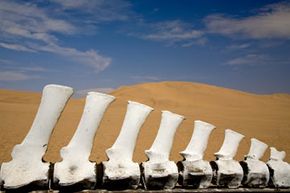There was a time when our planet was devoid of life. Nothing swam through its murky, blue-green seas. Nothing grew on its rocky continents nor soared through the reddish skies overhead. This was the prebiotic Earth.
Then the first primitive life forms evolved in the planet's oceans. They were simple, unicellular creatures, capable of tremendous adaptation. The organisms grew and spread, developing into countless varieties of life and altering the chemistry of the planet in the process.
Advertisement
Yet life's 4-billion year rule on this planet hasn't come uncontested. Evolution can't keep pace with rapid environmental change or protect us from certain extraordinary events. At least five separate extinction episodes have threatened life on Earth, destruction brought on by both cosmic bombardments and the planet's own internal turmoil.
As recently as 251 million years ago, the Permian-Triassic extinction event annihilated 90 percent of all marine species and 70 percent of all land vertebrates [source: ScienceDaily]. Fortunately for us, life endured -- and has since survived two additional major extinction events.
But how long can our luck hold out? Certainly life is durable and adaptive, able to thrive at lightless ocean depths and chilling atmospheric heights, but at what point will Earth return to its sterile, prebiotic roots?
Fortunately, technology gives humans the opportunity to safeguard life on Earth against many cosmic threats. For example, by mapping near-Earth objects and developing asteroid and comet mitigation strategies, scientists hope to prevent future catastrophic impacts. This doesn't mean we're safe from the dangers of outer space, however.
Keep reading to learn a little more about what some of those dangers might be.
Advertisement

